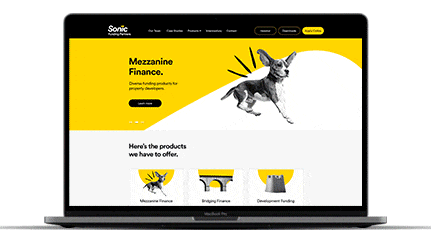Top Tips for Producing an Impactful Internet Site Design That Converts
To attain this, one have to take into consideration a range of elements, including recognizing the target audience, focusing on individual experience, and optimizing for mobile systems. The critical use of compelling call-to-actions and a distinct visual hierarchy plays a critical function in guiding customers with their journey.

Understand Your Target Market
Recognizing your target market is fundamental to reliable web site design, as it lays the foundation for producing an appealing customer experience. Recognizing who your customers are, including their demographics, preferences, and actions, allows designers to customize the site's web content, design, and functionality to fulfill particular demands.
Carrying out thorough market study is important in this process. Studies, interviews, and analytics can give important understandings into customer expectations and discomfort points. By assembling this information, designers can develop user identities that stand for different sectors of the target market, making certain that design choices are educated and relevant.
Moreover, understanding the target audience assists in picking suitable style components such as color plans, typography, and images that reverberate with customers. A site that speaks straight to its target market cultivates a sense of connection and count on, motivating longer brows through and higher conversion rates.
Inevitably, a user-centered strategy to website style not only improves customer contentment but also supports service goals by driving involvement and commitment. By focusing on the demands and choices of the target market, a website can efficiently serve its function and accomplish preferred end results.
Prioritize Customer Experience
To boost the overall effectiveness of a site, prioritizing individual experience (UX) is vital (Website Design). A well-designed UX guarantees that visitors can navigate the site easily, locate details swiftly, and involve with content meaningfully. This results in enhanced user satisfaction and higher conversion prices
Begin by applying instinctive navigating. Menus ought to be realistically structured, allowing customers to situate crucial areas of the website with marginal effort. Consistency in style elements, such as color systems and font styles, fosters familiarity, which is critical for preserving user involvement.
Furthermore, think about the filling rate of your site. A hold-up of simply a few secs can result in substantial drop-offs, as individuals are less most likely to wait for a slow-loading web page. Improving photos and enhancing code can enhance efficiency and retain site visitors.
Moreover, clearness in material presentation is important. Usage succinct, engaging language and break up message with visuals to boost readability. By prioritizing individual experience, you not just develop a more satisfying setting for site visitors but likewise enhance your brand great site name's reliability. Eventually, a concentrate on UX is a financial investment in the long-term success of your site.
Optimize for Mobile Gadgets
Enhancing for mobile phones is critical in today's electronic landscape, where a raising variety of customers accessibility internet sites via smart devices and tablet computers. A mobile-friendly layout not just boosts customer experience however likewise plays a considerable function in improving online search engine rankings. To achieve this, it is necessary to adopt a receptive layout that immediately gets used to various display dimensions and positionings.
Packing rate is one more essential element; mobile customers are generally much less person and expect quick accessibility to information. By prioritizing mobile optimization, you make certain that your website stays affordable and effectively engages a wider target market.
Use Compelling Call-to-Actions
A web site's effectiveness commonly pivots on its ability to direct site visitors towards wanted activities, making compelling call-to-actions (CTAs) vital elements of layout. CTAs work as the pivotal points that guide individuals to involve with the website, whether that suggests making a purchase, registering for a newsletter, or downloading and install a source.
To develop reliable CTAs, quality is paramount. Use concise language that clearly communicates the activity you want the user to take. Phrases such as "Begin," "Sign Up Free," or "Store Now" not just share necessity yet additionally remove obscurity. The positioning of CTAs is just as vital; they need to be purposefully placed throughout the web page to company website ensure they are quickly visible, especially in high-traffic areas.
Furthermore, the design of CTAs should stand out without being obtrusive. Use contrasting shades and clear font styles to ensure they record interest. Additionally, consider making use of directional hints, such as arrows or images, to lead individuals toward these switches. By concentrating on these their website elements, businesses can significantly boost individual engagement, driving conversions and inevitably accomplishing their website's objectives.
Emphasis on Visual Pecking Order
Reliable site style counts greatly on a well-structured visual pecking order that guides individuals via web content effortlessly. By arranging elements in a way that prioritizes information, developers can enhance customer experience and facilitate decision-making. This includes making use of size, shade, comparison, and spacing strategically to attract focus to the most important components of a website.
Using bigger fonts for headings and subheadings develops a clear difference in between different sections, enabling customers to check content effortlessly. Furthermore, using contrasting colors for buttons and calls-to-action can catch customer focus and encourage interaction. Whitespace is one more necessary part; it prevents clutter and allows individuals to concentrate on vital messages without distractions.
Images and graphics ought to match the text while likewise sticking to the well established power structure, reinforcing the overall message (Website Design). Consistency in design elements, such as color schemes and typography, further strengthens the visual pecking order, making navigation user-friendly

Conclusion
In conclusion, reliable web site design requires an extensive understanding of the target audience, prioritization of customer experience, and mobile optimization. Eventually, a well-executed internet site style offers as an important component in driving individual actions and accomplishing business goals.